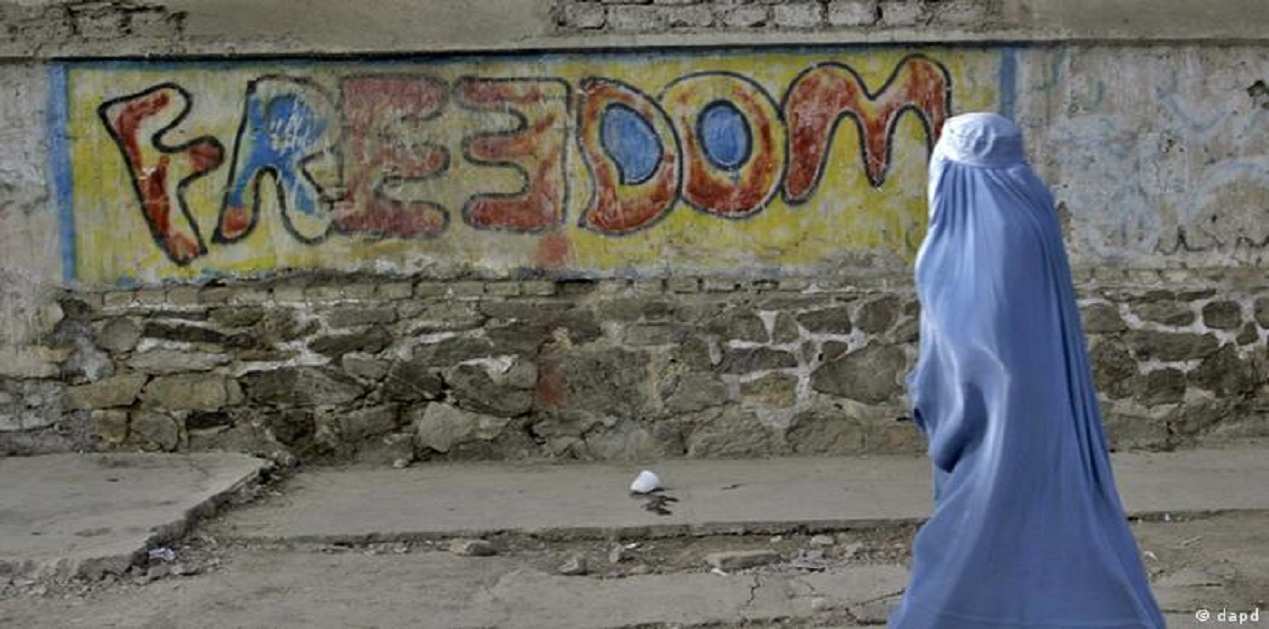The world is in a state of flux. Ukraine crisis is triggering cascading risks globally. However, while the world attention is diverted to the Ukraine conflict, the crisis in Afghanistan remains sidelined. The country faces confluence of multiple crises. Economy is in doldrums, there is political uncertainty and an unprecedented humanitarian crisis is leading the country to a precipice of unmitigated disaster. It is seen that nearly one third of the country is grappling with emergency levels of food insecurity. Adding to the misery is the worst drought recorded in 27 years. There has been an unprecedented rise in hunger from 14 million people in July 2021 to 23 million in March 2022. This has forced households to resort to desperate measures such as skipping meals or relying on debt to ensure there is some food on the table at the end of the day. Further economy is in dire straits as according to United Nations Development Programme (UNDP) 97% of the population teeters on the brink of universal poverty[1]. The financial situation already remains grim as more than $9 billon of Afghanistan’s assets were frozen after the Taliban took power last August.
The collapse of the Afghan economy and the engulfing humanitarian crisis has been deeply damaging for the Afghan women and girls. Though in the beginning there was some positive development on the issue of women rights. In a news conference after the group illegitimately wrested power in Afghanistan, Taliban spokesperson, Zabiullah Mujahid hadstated that men and women will have same rights and they intend to grant women’s rights “according to Islam” [2]. However, Taliban leaders have reneged on virtually every promise they made on the issue of minority and women rights. The group has categorically banned the Afghan women from the most paid employment, obstructed and curbed women’s free movement, abolished the Ministry of Women’s Affairs, and silenced the voices of female journalists. As far as the critical issue of the access to education is concerned millions of girls and women are denied this facility. This has left millions of girls and women with few opportunities to achieve their dreams. This can be further substantiated by the fact that since the Taliban takeover; as reported on 14 November 2021, girls only have access to secondary schools in seven of 34 provinces. [3]
There was a glimmer of hope when it was announced that secondary girls schools were set to open from March 23, 2022, however this optimism was short lived as girls were turned back from schools. The backtracking of Taliban’s promises on this crucial issue of reopening schools exposes the group’s real intentions and makes it clear that the benign mask put on by them has gone off. Importantly, it also underscores the division between the hardliners and pragmatists in Taliban. The Minister of Higher Education part of an all-male government has stated publicly that Islam has to be taken into consideration to be more powerful than qualifications, as without that education is of no value to boys or girls. Interestingly, secular education is not taken as a human right.
The Taliban have also raised an explicit concern around morality: men teaching female students, as well as girls’ dress code and keeping students in a clear segregation in university[4]. The U-turn on education has confirmed many women's worst fears about the new government. A UN senior official described the decision being of grave concern that how disempowering half of Afghanistan population is counterproductive and unjust[5]. The decision will be disastrous for Afghanistan’s already troubled economy as World Bank has halted four projects worth US $600 million. These projects were crucial for Afghanistan as it was meant to support health care, education and other important sectors.
The surprising decision has led to domestic and International criticism of the Taliban for reneging on the promise that all girls would be allowed to return to school. Immediately after the decision there was condemnation across the world. Foreign Ministers of Canada, France, Italy, Norway, the United Kingdom, and the United States of America and the high representative of European Union issued a joint statement to criticize Taliban’s decision to deny girls education. Further according to a media report envoys and representatives of the European Union, US, and the European countries in a joint statement pointed out that the International aid to Kabul will be dependent to Taliban’s fulfillment of promises to provide access to education for girls at all levels.
It is pertinent to note that women’s education has also become important litmus test for the countries to take the major decision on the recognition of the Taliban regime. Apart from education there are other bizarre new restrictions being imposed on the women. On 7th May 2022, Taliban imposed one of the harshest restrictions on Afghanistan's women since seizing power, ordering them to wear the all-covering burqa in public[6]. The critics and the Afghan women who are protesting for gender equality and freedom have denounced the sweeping decision.
The reality is that Taliban 2.0 has not changed and it still is steeped in a medieval mindset and is beginning to look like the old Taliban. From 1996 to 2001 when Taliban was in power in Afghanistan, stringent rules were imposed on women under the conservative interpretation of Islam. Some of the rules were that women couldn’t leave their homes without a male guardian and were required to cover their bodies with burqa.
It is important to mention that women rights were not absent in Afghanistan and under the democratic framework after US toppled the Taliban regime in 2001; women were given all kinds of rights. In fact the post-Taliban constitution of 2004 equally upholds the democratic processes and human rights including the rights and freedoms of women. It can also be ascertained by the fact that the percentage of girls enrolled in primary schools rose from fewer than 10 percent in 2003 in primary schools to 33 percent in 2017. Women have also been at the forefront in contributing to the development of Afghanistan. The numbers are telling as by 2020, 21 per cent of Afghan civil servants were women (compared with almost none during the Taliban years), 16 per cent of them in senior management levels; and 27 per cent of Afghan members of Parliament were women[7].
However, Afghan women’s hard won rights are being taken away. Dark days lie ahead for the women of the country. Women have endured patriarchal structures; religious fundamentalism, corruption and the all-prevailing insecurity prevented this. Many difficult challenges lie ahead in a deeply conflicted and polarised country. Nine months after the Taliban takeover/US withdrawal, we're seeing a convergence of worst-case scenarios: upsurges in terror, Taliban ratcheting up its retrogressive policies and an unprecedented humanitarian catastrophe knocking at the country’s doors. Women’s proactive participation and leadership in public and political life is absolutely crucial for Afghanistan’s future, long-term development, and sustained peace. Further, it is extremely essential for envisaging a vibrant economy that can bounce back from any crisis. International community should take note of how gender inequality is exacerbating the ongoing humanitarian crisis in Afghanistan and must stand by its long term commitment to support women’s rights.
References:
[1]https://www.livemint.com/news/world/97-of-afghan-population-could-plunge-into-poverty-by-mid-2022-undp-11631235190491.html
[2]https://www.thenational.scot/news/19519364.afghanistan-taliban-hold-first-press-conference-kabul/
[3]https://www.unwomen.org/sites/default/files/2021-12/Gender-alert-Womens-rights-in-Afghanistan-en.pdf
[4]https://gandhara.rferl.org/a/taliban-dress-code-segregation-women/31446726.html
[5]https://news.un.org/en/story/2022/03/1114482
[6]https://www.voanews.com/a/taliban-order-afghan-women-to-wear-all-covering-burqa-in-public/6562006.html
[7]https://www.brookings.edu/essay/the-fate-of-womens-rights-in-afghanistan/
(The paper is the author’s individual scholastic articulation. The author certifies that the article/paper is original in content, unpublished and it has not been submitted for publication/web upload elsewhere, and that the facts and figures quoted are duly referenced, as needed, and are believed to be correct). (The paper does not necessarily represent the organisational stance... More >>
Image Source: https://static.dw.com/image/16083668_303.jpg











Post new comment